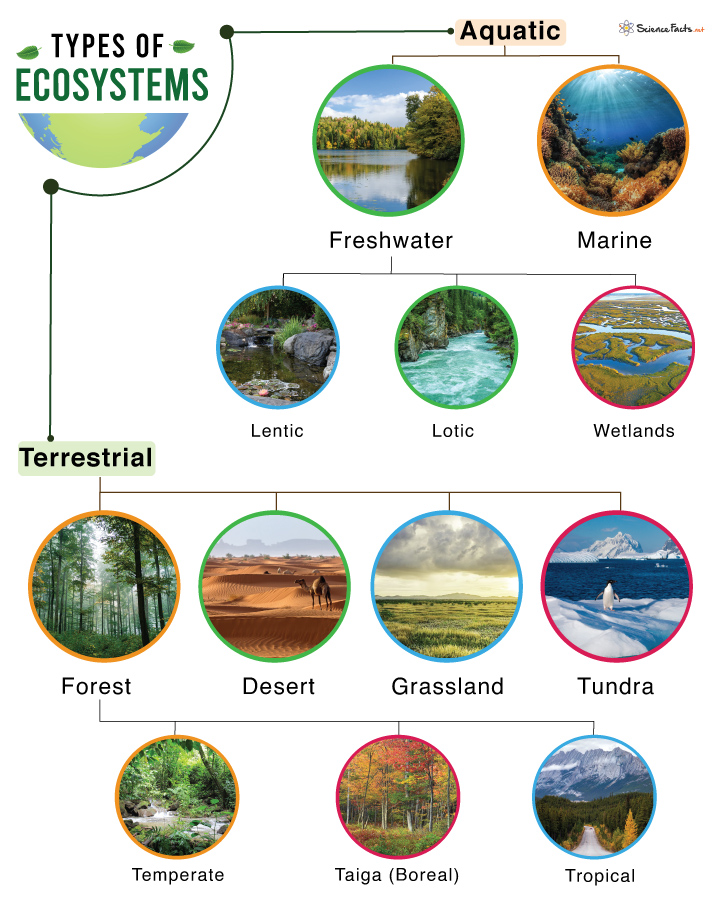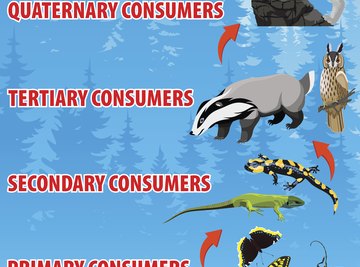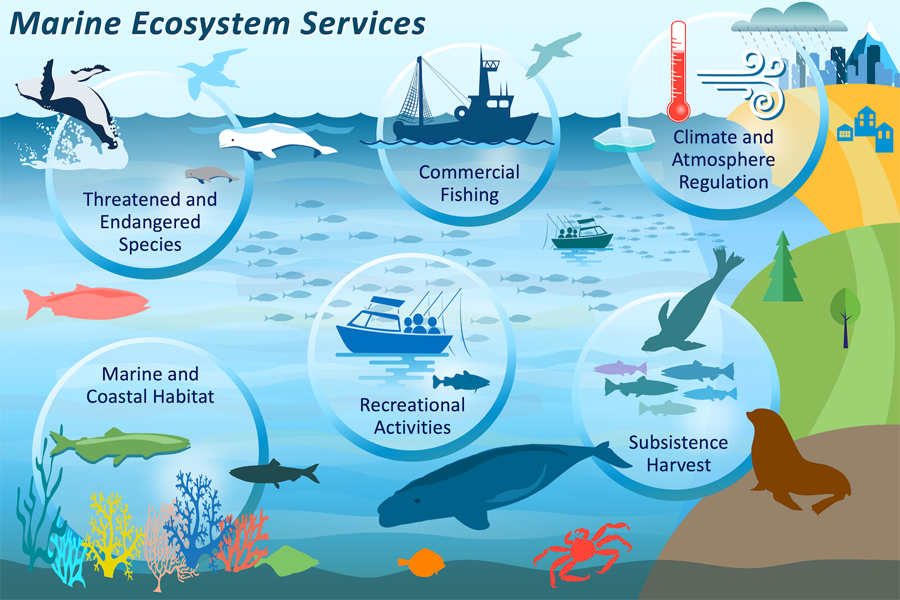Topic types of disturbances in an ecosystem: Explore the dynamic world of ecosystems, where natural and human-induced disturbances shape the tapestry of life, fostering resilience and adaptation.
Table of Content
- What are the different types of disturbances that can occur in an ecosystem?
- Understanding Ecosystem Disturbances
- Common Natural Disturbances: Fires, Storms, and Floods
- Human-Induced Disturbances: Pollution and Land Use Changes
- Biological Disturbances: Invasive Species and Disease Outbreaks
- Physical Disturbances: Volcanic Eruptions and Earthquakes
- Climate-Related Disturbances: Droughts and Temperature Shifts
- YOUTUBE: Disturbance
- Disturbance Regimes: Frequency, Intensity, and Recovery
- Impact of Disturbances on Biodiversity and Ecosystem Services
- Adaptation and Resilience: Ecosystem Responses to Disturbances
- Management Strategies: Mitigation and Restoration Efforts
What are the different types of disturbances that can occur in an ecosystem?
There are various types of disturbances that can occur in an ecosystem. Some common examples include:
- Fires
- Landslides
- Flooding
- Windstorms
- Insect and pest outbreaks
- Storms
- Diseases
- Volcanic eruptions
- Trampling
- Earthquakes
- Tsunami
These disturbances can have significant impacts on the ecosystem, disrupting the balance and affecting the various components of the ecosystem such as plant and animal populations, nutrient cycling, and overall biodiversity.
READ MORE:
Understanding Ecosystem Disturbances
Ecosystem disturbances are events that disrupt ecological balance, impacting organisms and altering resource availability. These events can be natural or anthropogenic, each with unique effects on ecosystem structure and function.
- Natural Disturbances: Events like wildfires, storms, and floods are part of Earth"s dynamic system, playing a crucial role in shaping ecosystems by removing old or weak individuals and creating opportunities for new life.
- Human-Induced Disturbances: Activities such as deforestation, pollution, and urbanization can drastically alter habitats, leading to loss of biodiversity and ecosystem services.
- Biological Disturbances: Invasions by non-native species or disease outbreaks can significantly impact native populations and ecosystem health.
Understanding these disturbances is key to managing ecosystems sustainably, ensuring resilience, and maintaining biodiversity. By studying the causes, effects, and recovery processes associated with disturbances, we can better anticipate and mitigate their impact.
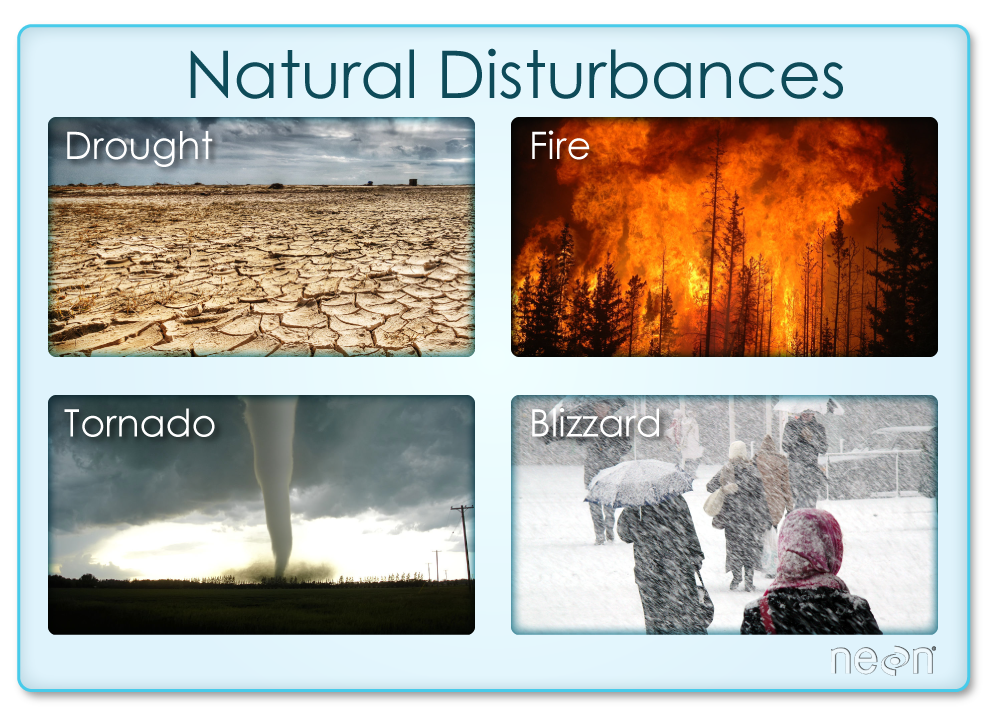
Common Natural Disturbances: Fires, Storms, and Floods
Natural disturbances play a pivotal role in shaping ecosystems, fostering regeneration, and maintaining biodiversity. They can reset ecological clocks and create niches for various life forms.
- Fires: Natural wildfires, often ignited by lightning, clear dead biomass, enrich the soil, and open up space for new growth. Certain species depend on fire for their life cycles, such as the Jack Pine with its serotinous cones.
- Storms: Storms, including hurricanes and tornadoes, can cause significant damage to ecosystems, but also contribute to their dynamism and diversity. They redistribute nutrients, shape landscapes, and create habitats for different species.
- Floods: Floods play a crucial role in nutrient distribution and habitat creation, especially in riverine and wetland ecosystems. They replenish soils, support fish populations, and disperse plant seeds.
Understanding these natural processes is essential for appreciating the resilience and adaptability of ecosystems in the face of disturbances.
Human-Induced Disturbances: Pollution and Land Use Changes
Human activities significantly impact ecosystems, leading to disturbances that can have lasting effects on biodiversity and ecological balance. From urban expansion to industrial pollution, the human footprint is evident across various landscapes.
- Pollution: Industrial, agricultural, and urban activities release pollutants into the air, water, and soil, affecting wildlife health, plant growth, and water quality. Efforts to reduce emissions and clean up polluted areas are crucial for ecosystem recovery.
- Land Use Changes: Deforestation, urbanization, and agricultural expansion alter habitats, reduce green spaces, and fragment ecosystems. Sustainable land management and conservation practices are vital to mitigate these disturbances.
Addressing these challenges requires collective action and innovative solutions to ensure the health and resilience of our planet"s ecosystems.

Biological Disturbances: Invasive Species and Disease Outbreaks
Biological disturbances, such as invasive species and disease outbreaks, pose significant threats to ecosystem health, often leading to reduced biodiversity and altered habitat structure.
- Invasive Species: Non-native plants, animals, and microorganisms can outcompete, prey upon, or bring diseases to native species, disrupting ecological balances and leading to loss of native biodiversity.
- Disease Outbreaks: Pathogens can decimate plant and animal populations, sometimes leading to widespread mortality and significant shifts in ecosystem composition and function.
Efforts to control invasive species and prevent disease outbreaks are critical for maintaining ecosystem health and resilience.
Physical Disturbances: Volcanic Eruptions and Earthquakes
Physical disturbances such as volcanic eruptions and earthquakes represent powerful natural forces that reshape ecosystems in profound ways.
- Volcanic Eruptions: Volcanoes can radically alter landscapes, create new landforms, and deposit nutrient-rich ash that enhances soil fertility, supporting new plant growth in the long term.
- Earthquakes: Earthquakes can modify land topography, alter watercourses, and trigger landslides, impacting habitat structures and availability for various species.
Despite their destructive power, these disturbances also contribute to the dynamic nature of Earth"s ecosystems, driving evolution and creating new habitats.
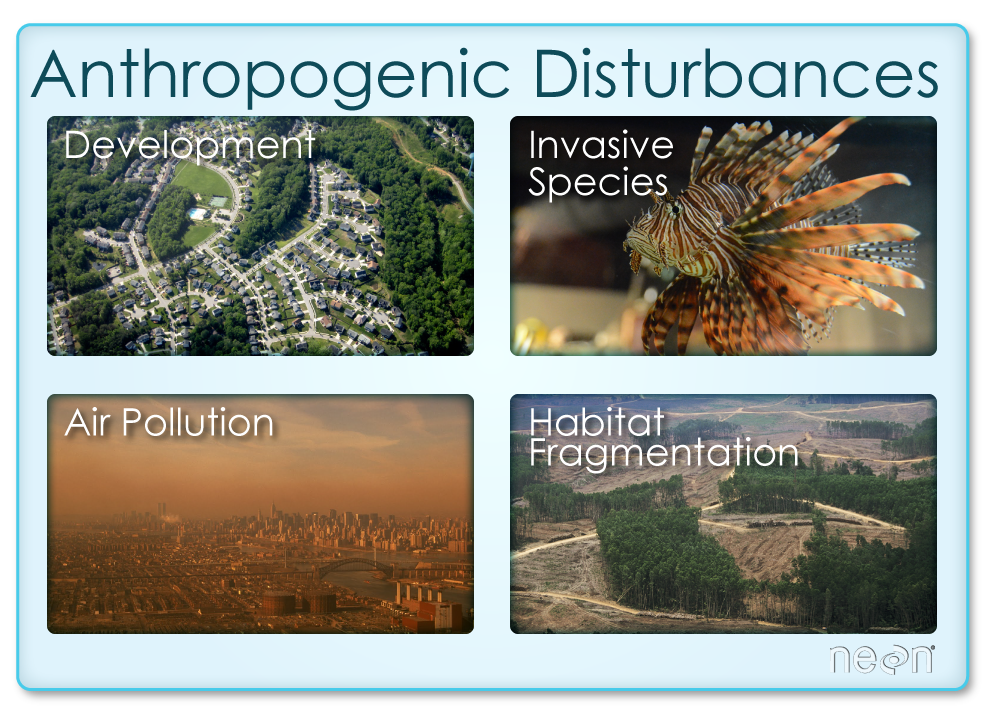
Climate-Related Disturbances: Droughts and Temperature Shifts
Climate-related disturbances like droughts and temperature shifts significantly impact ecosystems, altering species composition, and disrupting ecological balance. These disturbances can have both immediate and long-term effects on biodiversity and ecosystem services.
- Droughts: Prolonged periods of low rainfall reduce water availability, affecting plant and animal life. Droughts can lead to reduced plant growth, lower crop yields, and increased mortality in wildlife due to dehydration and habitat loss.
- Temperature Shifts: Sudden or gradual changes in temperature can stress ecosystems, particularly those adapted to stable climate conditions. Warming trends can alter migration patterns, breeding seasons, and food availability, while sudden cold snaps can cause widespread damage to unadapted plant and animal species.
These climate disturbances require ecosystems to adapt or transform, influencing conservation strategies and management practices aimed at mitigating their impacts and enhancing resilience.
Disturbance
\"Discover the beauty and balance of our planet\'s vibrant ecosystem in this captivating video. From lush rainforests to coral reefs, witness the incredible diversity of life and learn how each organism plays a vital role in maintaining this delicate web of life.\"
Ecosystem Disturbances
\"Explore the fascinating world of natural disturbances in this gripping video. Uncover the surprising ways in which these disruptions shape ecosystems, from wildfires rejuvenating forests to storms reshaping coastlines. Journey into the heart of nature\'s resilience and adaptation.\"
Disturbance Regimes: Frequency, Intensity, and Recovery
Disturbance regimes encompass the frequency, intensity, and recovery patterns of ecological disturbances, playing a critical role in shaping ecosystems. These regimes determine the resilience and adaptability of ecosystems to various disturbances.
- Frequency: The regularity of disturbances varies widely, from frequent occurrences such as annual floods to rare events like volcanic eruptions. The frequency of disturbances influences the evolutionary and adaptive traits of species within an ecosystem.
- Intensity: Disturbances can range from mild, causing minimal impact, to severe, drastically altering the ecosystem structure. The intensity of a disturbance affects the immediate damage to the ecosystem and the extent of change in community composition.
- Recovery: Post-disturbance, ecosystems undergo recovery processes that can lead to a return to the pre-disturbance state or lead to a new equilibrium. Recovery rates and outcomes depend on the resilience of the ecosystem and the life history traits of the species affected.
Understanding disturbance regimes is crucial for effective ecosystem management, conservation strategies, and predicting the impacts of future disturbances.

Impact of Disturbances on Biodiversity and Ecosystem Services
Disturbances, whether natural or human-induced, play a significant role in shaping ecosystems, influencing biodiversity and the provision of ecosystem services. Their impact varies depending on the type, frequency, and severity of the disturbance.
- Biodiversity: Disturbances can lead to changes in species richness and diversity. Moderate levels of disturbance, according to the intermediate disturbance hypothesis, can increase species diversity by creating opportunities for less competitive species. However, high-intensity or frequent disturbances might reduce diversity by exceeding the tolerance limits of many species or by preventing slow-growing species from establishing.
- Ecosystem Services: Disturbances affect ecosystem services by altering ecosystem structure and function. For example, forest fires can return nutrients to the soil and promote new growth, while also creating habitats for a variety of wildlife, thus supporting biodiversity and contributing to the resilience of ecosystems.
- Ecological Succession: Following a disturbance, ecosystems typically undergo a process of ecological succession, where the disturbed area is gradually recolonized by species. This process can be primary, starting in nearly lifeless areas, or secondary, where soil remains post-disturbance. Succession contributes to the dynamic nature of ecosystems, often leading to changes in community composition and structure over time.
Understanding the complex relationships between disturbances, biodiversity, and ecosystem services is crucial for effective ecosystem management and conservation strategies, particularly in the context of global environmental changes.
Adaptation and Resilience: Ecosystem Responses to Disturbances
Ecosystems exhibit remarkable adaptability and resilience in the face of disturbances, whether natural or human-induced. Adaptation and resilience mechanisms enable ecosystems to recover from disturbances, maintaining functionality and biodiversity.
- Adaptation Mechanisms: Species within ecosystems have evolved various adaptive strategies to survive disturbances. For example, certain plants and animals are particularly suited to exploiting recently disturbed sites, rapidly colonizing and thriving in these new conditions. Species like the Jack pine have developed serotinous cones that open only with the heat from fires, ensuring their seeds are sown post-disturbance for regeneration.
- Resilience through Succession: Ecosystems recover via processes like primary and secondary succession. Primary succession occurs in lifeless areas, starting with pioneer species like lichens and mosses, and eventually leading to a climax community. Secondary succession takes place in areas where soil remains post-disturbance, allowing for faster recovery as existing seeds and biological remnants facilitate regrowth.
- Frequency and Recovery Dynamics: The frequency of disturbances can significantly affect ecosystem recovery. Too frequent disturbances may prevent ecosystems from returning to their pre-disturbance states, leading to alternative community states. Conversely, some species depend on disturbances for survival and regeneration, showcasing a complex relationship between disturbance frequency and ecosystem health.
Understanding the dynamics of adaptation and resilience in ecosystems is crucial for conservation efforts, especially in the context of increasing anthropogenic pressures and climate change. It highlights the importance of maintaining natural disturbance regimes to support biodiversity and ecosystem services.
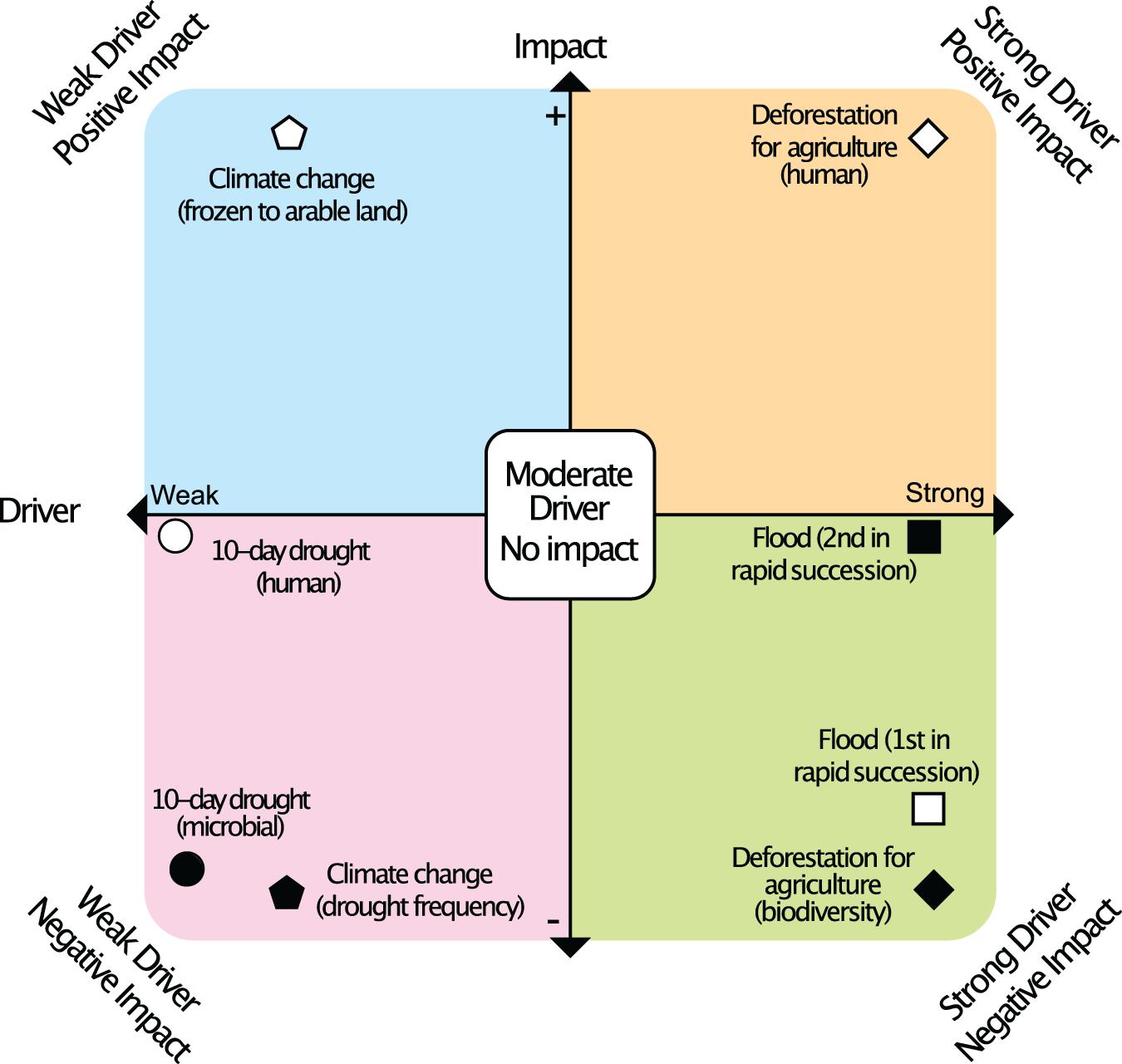
READ MORE:
Management Strategies: Mitigation and Restoration Efforts
Effective management of ecosystems involves strategies aimed at mitigating disturbances and restoring ecosystems to their natural states. These strategies are crucial for maintaining biodiversity, ecosystem services, and overall ecological balance.
- Mitigation Efforts: Mitigation involves proactive measures to prevent or reduce the impact of disturbances. This can include land-use planning that minimizes habitat fragmentation, implementing fire breaks to control wildfires, and policies to reduce pollution and prevent the introduction of invasive species.
- Restoration Initiatives: Restoration efforts focus on rehabilitating ecosystems that have been degraded, damaged, or destroyed. Techniques can vary from reforestation and replanting native species to removing invasive species and rehabilitating soil and water quality. Restoration aims to return the ecosystem as closely as possible to its original state, or to a stable, healthy state that can sustain native biodiversity.
- Community Involvement: Engaging local communities in conservation efforts can enhance the success of mitigation and restoration initiatives. Education and awareness programs can foster a sense of stewardship and provide the necessary support for conservation projects.
- Adaptive Management: This approach involves monitoring ecosystem responses to management actions, learning from these interventions, and adjusting strategies accordingly. It recognizes the dynamic nature of ecosystems and the need for flexible management practices that can respond to new information and changing conditions.
By integrating these strategies, management efforts can effectively address the challenges posed by ecological disturbances, promoting resilience and sustainability within ecosystems.
Explore the dynamic interplay of disturbances in ecosystems, understanding their role in shaping biodiversity and resilience, and learn about innovative management strategies for a sustainable future.


